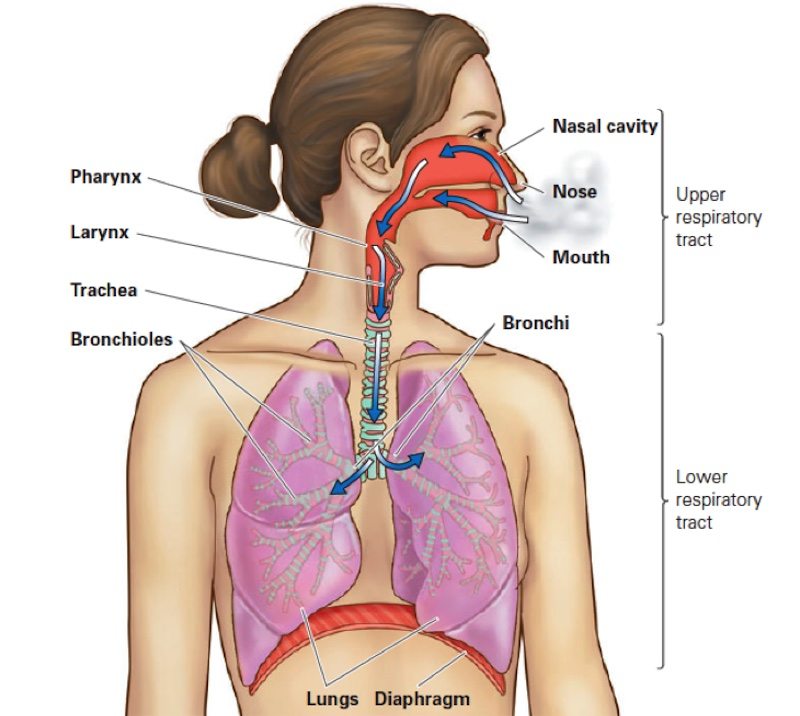Respiratory system
Episode #6 of the course “How the human body works”
The respiratory system includes the lungs, nose, mouth, trachea, and diaphragm. The lungs are the main organs responsible for introducing oxygen into the body and expelling gas waste—largely carbon dioxide, which is the byproduct of muscle function and is poisonous to cells. Lung function is essential for the body. Without fresh oxygen and removal of carbon dioxide, brain cells begin to die within about four minutes, which results in brain damage and eventual death.
Humans have two lungs in the chest, protected by the ribs, with the heart between them and the diaphragm underneath. The right lung is separated in three sections called lobes, and the left lung is made of two lobes. The left lung is smaller to accommodate the heart. Both lungs breathe air in and deliver oxygen to the cardiovascular system. They perform the same functions, which means that if a person loses one lung, they can continue to live, although breathing normally may be harder.
Supporting respiratory structures include the mouth and nose, where air enters the body, the trachea and bronchi (tubes lined with hair-like fibers to transmit air to the lungs while filtering it), and the diaphragm, a strong muscle that helps the lungs expand and contract, moving air in and out.
A person’s breathing rate, or “respiration,” varies because of age, health, and physical activity. Generally, when resting, people breathe slower and more deeply into the lungs—about 20 breaths per minute for an infant and 12 for an adult. When active, the body’s muscles demand more oxygen because they work harder, which makes the respiratory system work harder and increases a person’s respiration rate up to 60 breaths per minute for a baby and 45 for an adult. Breathing too fast or not deeply enough results in a lack of oxygen in the brain, which can cause loss of consciousness.
Share with friends

